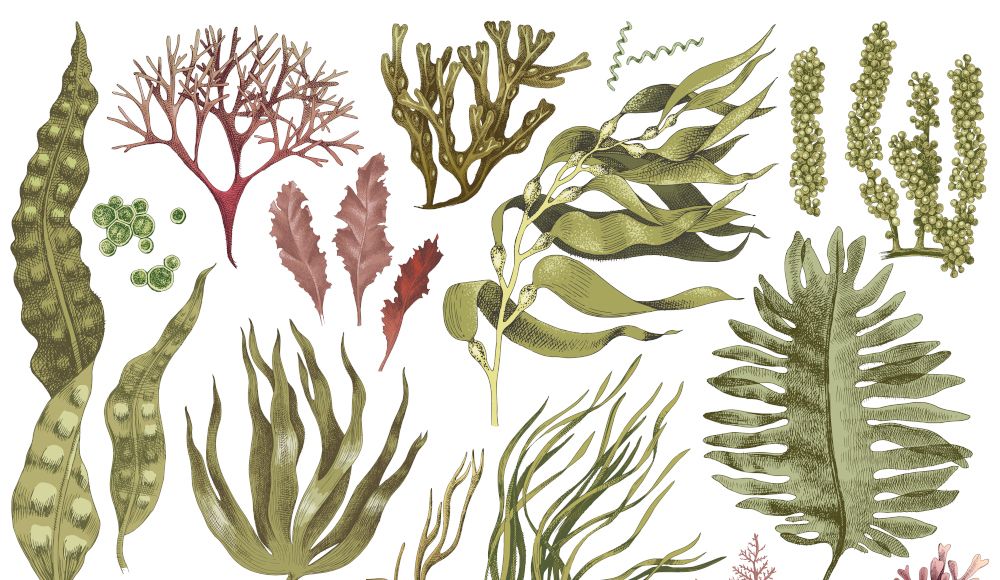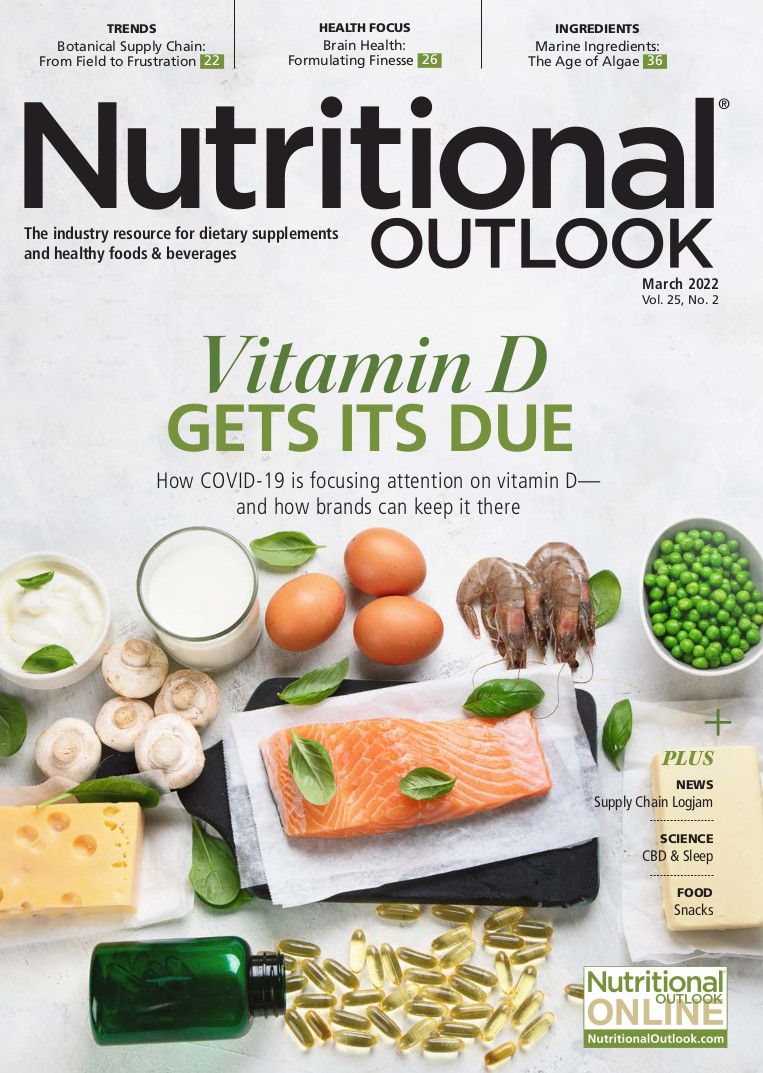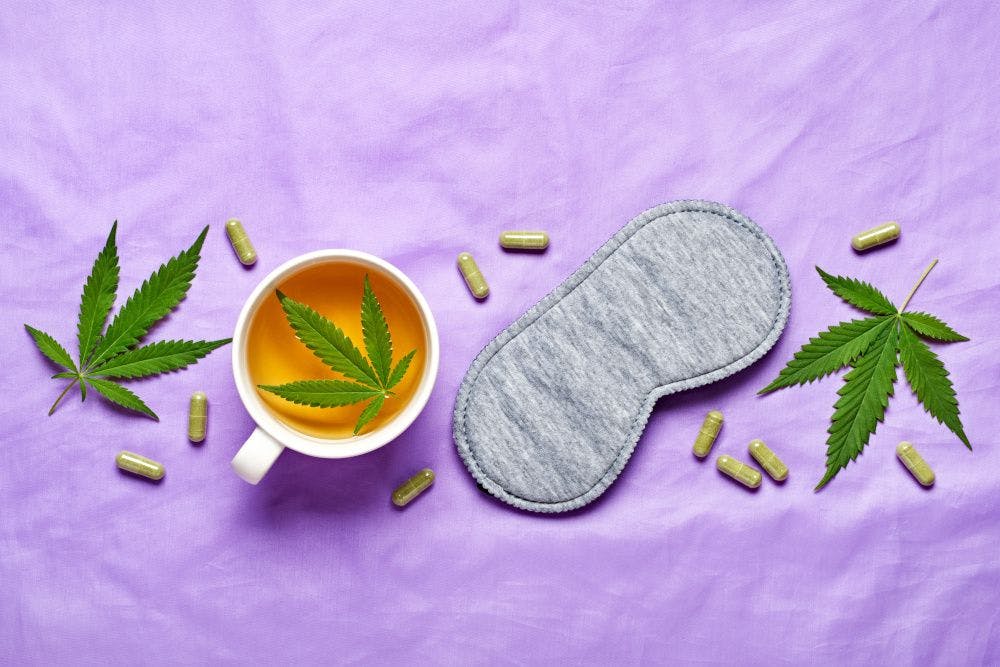Marine and algae ingredients are a research hotspot, with multiple suppliers investing in clinical trials on ingredients sourced from plankton, seaweed, jellyfish, and an array of other forms of sea life. These studies are investigating algae for a wide variety of applications, from eye health to sports nutrition and beyond. In addition, supplier sustainability initiatives are making marine ingredients more eco-friendly while also securing the supply chain.
Ahead, we look at some of the exciting developments indicating that formulators shouldn’t sleep on the vast opportunities algae and marine ingredients present.
Can Fucoidan Assist with Eczema?
Fucoidan is a long-chain sulfated polysaccharide derived from various species of brown seaweed, typically Fucus vesiculosus (bladderwrack) or Undaria pinnatifida (wakame). In recent years, fucoidan has attracted significant research investment for all manner of applications.
Since 2012, global fucoidan research has accelerated, with the body of research around this compound now comprising more than 2,300 peer-reviewed papers, notes Amanda Mackinnon, marketing and communications manager for Marinova (Cambridge, Tasmania, Australia). In 2021 alone, more than 200 new studies explored fucoidan’s potential applications in immune health, gut health, and as an anti-inflammatory, she says.
Fucoidan researchers are now turning their attention toward skin conditions. Marinova’s newest study1, an in vitro trial that the company conducted and funded in partnership with StratiCELL (Isnes, Belgium), examined the effects of Marinova’s topically applied Fucus vesiculosus and Undaria pinnatifida extracts on gene expression of atopic dermatitis and bacterial adhesion to reconstructed skin.
A simulated form of atopic dermatitis was induced through 48 hours of direct application to the skin of the Th2-related cytokines IL-4, IL-13, and IL-25. During the next 48 hours, the two types of fucoidan extracts were applied topically to five skin samples at a 100 microgram-per-milliliter dose. Staphylococcus aureus and Staphylococcus epidermidis cultures from the American Type Culture Collection were introduced into the samples at a 105 CFU/ml concentration for 30 minutes. Two control compounds, phosphate buffered saline and dimethyl sulfoxide, were separately administered to two samples of reconstructed skin. The study authors ran gene expression analysis and immunoassay tests on the samples, and examined the samples for colonization.
Both types of fucoidan extracts were found to downregulate CD44 antigen and S100A6, a pair of genes associated with inflammation and atopic dermatitis. Both types of fucoidan extract also reduced S. aureus adhesion.
“Importantly, fucoidan did not affect the adhesion of Staphylococcus epidermidis, a common bacterium found on healthy skin,” Mackinnon says. “The results suggest fucoidan may be a useful topical agent to assist in the future management of eczema.”
Sustainable Practices Maintain Seaweed Crop
Recent research demonstrates that marine sustainability initiatives are viable over the long term. One 2021 biomass survey6 of Ascophyllum nodosum seaweed crop in Atlantic Canada, conducted by Acadian Seaplants (Dartmouth, Nova Scotia, Canada), found that in spite of higher-than-ideal water temperatures, an area-based resource management program that limited annual harvesting to 17% of stock and holdfasts to no more than 10% of harvested biomass successfully preserved the height and integrity of the crop over the course of 25 years.
Exploring Jellyfish Collagen’s Cognitive Benefits
Collagen has long been a popular ingredient in the beauty-from-within market and has made significant inroads in joint health and several other markets. Upcoming studies will now investigate a novel form of collagen sourced from edible, wild-caught cannonball and barrel jellyfish.
Certified Nutraceuticals (Pauma Valley, CA) is finalizing a comprehensive research plan for its branded KollaJell, a collagen ingredient sourced from jellyfish, says Abdul Alkayali, the company’s vice president of sales and marketing. This multiyear research plan will illuminate KollaJell’s mechanism of action and evaluate its effects on cognitive performance in a human clinical trial.
“KollaJell is a first-of-its-kind collagen that contains all 20 essential and nonessential amino acids for healthy brain function,” Alkayali explains. “It’s rich in glutamate, glycine, tryptophan, and tyrosine, which form neurotransmitters and control homeostasis in the gut-brain axis.” In fact, KollaJell contains a variety of brain health macronutrients that aren’t found in other types of collagen, including phosphorus, iron, silicon, magnesium, calcium, zinc, manganese, and sulfur, Alkayali says.
Studies have already examined jellyfish collagen for its high antioxidant content as well as its potential uses in cell cultures, tissue scaffolding, and wound healing. Certified Nutraceuticals received a U.S. patent for KollaJell in 2019, followed by a Chinese patent in 2021.
Marine Minerals for Brain Health?
A 2021 animal study7 sponsored by Marigot (County Cork, Ireland) found that a blend of Marigot’s branded marine-derived ingredients Aquamin F and Aquamin Mg reduced cognitive deficits in middle-aged rats. Sourced from Lithothamnion sp. red algae, Aquamin F is a multimineral rich in calcium. Aquamin MG is a magnesium ingredient extracted from seawater. Both ingredients are exclusively distributed in North America by Stauber Ingredients (Fullerton, CA), a subsidiary of Hawkins Inc. (Roseville, MN).
Phytoplankton Ingredient Boosts Sports Performance
Sports nutrition and algae may not seem like a natural pairing, but new research demonstrates that the microalgae phytoplankton can provide benefits to athletes.
One 2021 randomized, double-blind, placebo-controlled parallel clinical trial2 assessed the effects of Oceanix-brand Tetraselmis chuii marine phytoplankton supplied by Lonza (Morristown, NJ) on ground reaction forces, perceived recovery status, and explosive strength in 22 male and female subjects between the ages of 18 and 45.
The subjects were randomly assigned to receive either 25 mg of Oceanix per day, or a placebo, for five weeks. All subjects underwent a five-week resistance-training program consisting of tri-weekly sessions. Resistance loads were gradually increased over the five weeks until the subjects reached muscular failure. Each session was preceded by a warm-up routine of squats and submaximal countermovement jumps. Each session was followed by a cooldown period that involved 20-second stretches repeated twice. A certified strength and conditioning specialist supervised all sessions.
The testing phase of this trial involved two force plate countermovement jumps with arm swing, performed at maximum exertion, with a 30-second break in between. A pair of force plates measured the amount of force exerted during each jump. The study authors also recorded the subjects’ maximum jump height, and subjects underwent a blood draw. All of these tests were performed at baseline and after six weeks, with additional jump tests at the end of week 2 and week 5. Subjects also had their height, weight, and body composition measured with a stadiometer, a digital scale, and a whole-body X-ray device.
After five weeks, the subjects receiving Oceanix reported greater changes in Perceived Recovery Status than the placebo group. While both groups saw decreases in their peak and mean explosive strength after week 2 and week 5, the placebo group’s decreases were significantly larger and lasted significantly longer than the Oceanix group’s decreases. At the week 6 post-trial follow-up visit, the Oceanix group’s mean explosive strength had returned to 98% of baseline, while the placebo group’s mean explosive strength was 68% of baseline. The authors of this Lonza-sponsored trial concluded that marine phytoplankton improves exercise recovery.
Marine phytoplankton offers a variety of advantages over traditional sports nutrition products, says Lindsey Toth, director of global marketing for Lonza Capsules & Health Ingredients. In contrast with products like creatine monohydrate, Toth says, phytoplankton is clean-label and plant-based.
“Microalgae ingredients are a nutritional powerhouse,” she notes. “They’re rich in antioxidants and offer a variety of essential nutrients, including amino acids, fatty acids, calcium, iron, zinc, and vitamins. This nutrition density leads them to support various active nutrition goals such as improved strength and reduced recovery time.”
Astaxanthin Improves Visual Acuity and Focus
New research supports the potential of marine ingredients in eye health supplements. A 2021 clinical trial8 sponsored by BGG Japan (Tokyo) and DHC Corporation (Tokyo) found that a synergistic blend of BGG’s branded Astazine astaxanthin and MyrtiPro bilberry extract, mixed with Omnica’s (Tokyo) branded lutein, improved pupillary response and enhanced visual acuity in healthy adults.
An Astaxanthin with Improved Sustainability
Suppliers are very much focused on the sustainability of their marine ingredients. Preserving the integrity of ocean life is critically important for these companies as concerns around overfishing grow.
Research demonstrates that the over-extraction of marine life like coral and algae creates a domino effect that is disrupting the marine ecosystem.3 But there’s hope. While Dalhousie University (Nova Scotia, Canada) marine biologist Boris Worm, PhD, previously predicted that overfishing is on track to cause the total collapse of the global marine industry by 20484, he now says that the proliferation of marine conservation initiatives and the introduction of government-run marine supply chain management programs have given the marine industry a second chance at long-term viability.5
One emerging sustainability initiative helping to secure the marine ingredient supply chain involves extracting marine ingredients from alternative sources.
Take astaxanthin. There are few microorganisms in nature that produce astaxanthin, says Elzaphan Hotam, CEO of NextFerm Technologies (Berkeley Heights, NJ). Although astaxanthin is classically conceived of as a marine ingredient given its high prevalence in salmon, shrimp, algae, and other marine life, Hotam says his company’s proprietary fermentation process enables it to extract astaxanthin from Phaffia rhodozyma yeast instead of algae. The company’s branded astaxanthin product AstaFerm, derived from fermentation, is designed for incorporation into a variety of applications like softgels, gummies, and water-soluble powders.
“Fermentation requires minimal use of land, water, and electricity,” Hotam says. But there are other benefits, too. For instance, “It also maintains better batch-to-batch consistency, higher potency, and less flavoring,” he says. “Our flavorless powder for gummies, for example, is about 10 times more potent than algae-based.”
NextFerm is also investing in research on its astaxanthin. The company is planning to follow up its previous clinical trials on astaxanthin’s effects on oxidative stress with further trials on other indications.
The Future Is Bright
Algae-based ingredients are undergoing significant innovation and research, with new studies demonstrating everything from potential antibacterial benefits to sports nutrition and cognitive health applications. Sustainability initiatives are also giving rise to more formulator-friendly ingredients. By looking to the sea, brands and suppliers will find new opportunities for functional, sustainable algae products.
References
- Park AY et al. “Modulation of gene expression in a sterile atopic dermatitis model and inhibition of Staphylococcus aureus adhesion by fucoidan.” Dermatopathology, vol. 8, no. 2 (March 25, 2021): 69-83
- Sharp MH et al. “Marine phytoplankton improves exercise recovery in humans and activates repair mechanisms in rats.” International Journal of Sports Medicine, vol. 42, no. 12 (November 2021): 1070-1082
- McKeever A et al. “How Overfishing Threatens the World’s Oceans – and Why It Could End in Catastrophe.” National Geographic. Published February 7, 2022.
- Worm B et al. “Impacts of biodiversity loss on ocean ecosystem services.” Science, vol. 314, no. 5800 (November 3, 2006): 787-790
- Worm B. “We Projected a Fisheries Collapse by 2048—Now There Is Reason for Hope.” The Hill. Published online June 8, 2021.
- Lauzon-Guay JS et al. “Biomass and height of Ascophyllum nodosum after two decades of continuous commercial harvesting in eastern Canada.” Journal of Applied Phycology, vol. 33 (June 2021): 1695-1708
- Crowley EK et al. “A reduction in behavioral pattern separation is attenuated by dietary supplementation with a magnesium-rich marine mineral blend in middle-aged rats.” Journal of Medicinal Food. Published online ahead of print June 29, 2021.
- Kizawa Y et al. “Effects of anthocyanin, astaxanthin, and lutein on eye functions: A randomized, double-blind, placebo-controlled study.” Journal of Clinical Biochemistry and Nutrition, vol. 69, no. 1 (July 2021): 77-90























